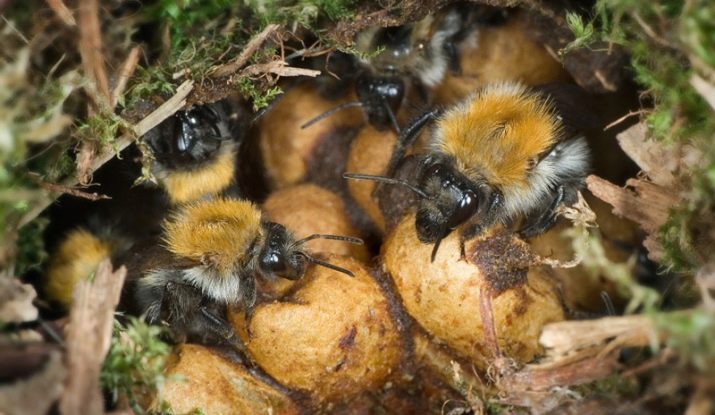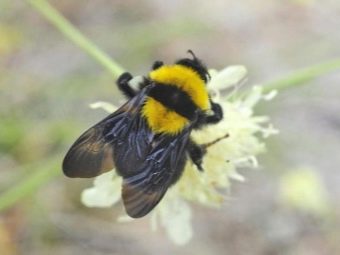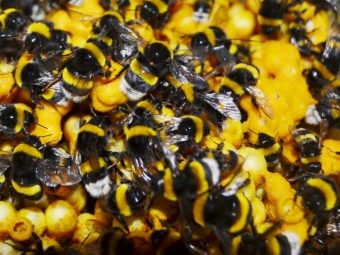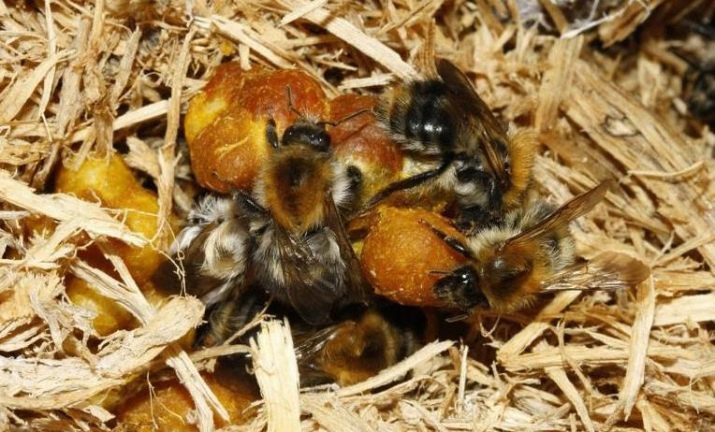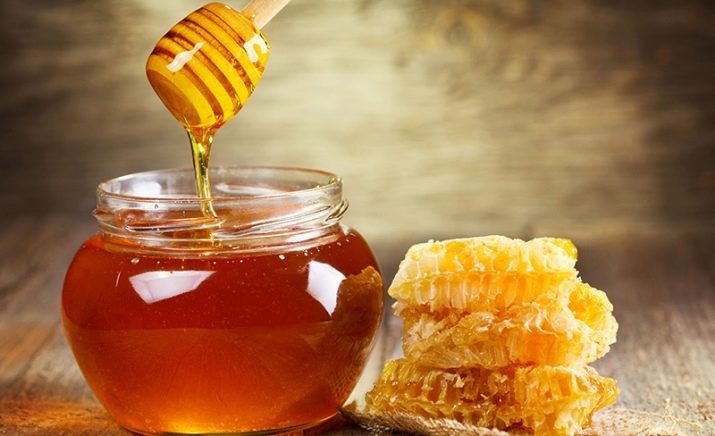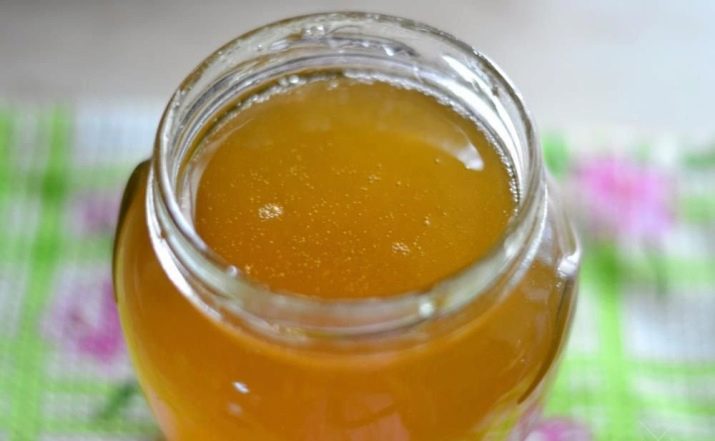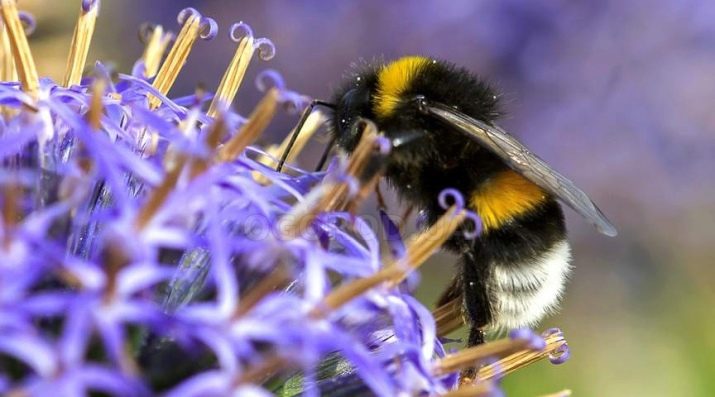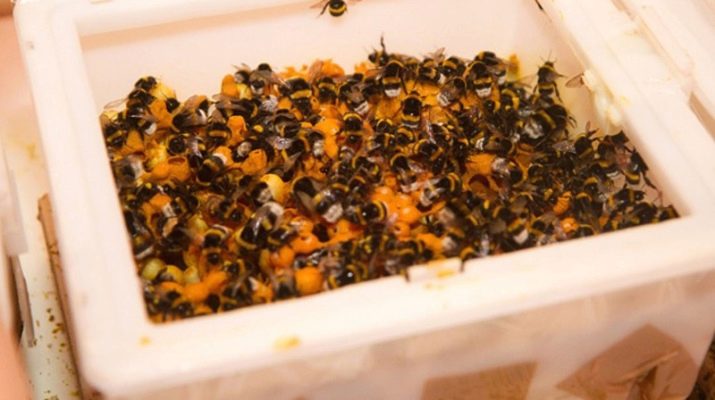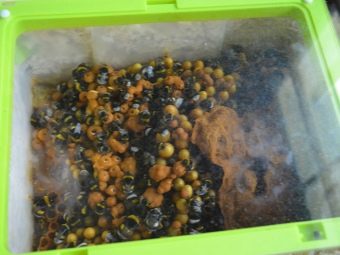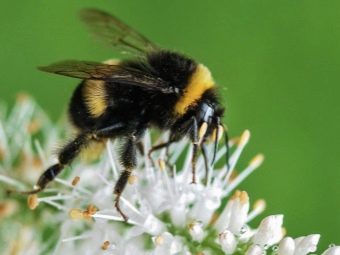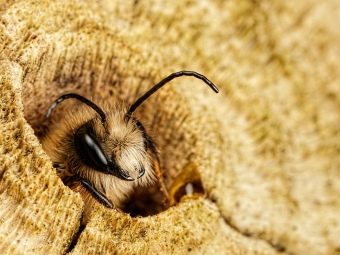Bumble-bee honey: is there really and how to choose?
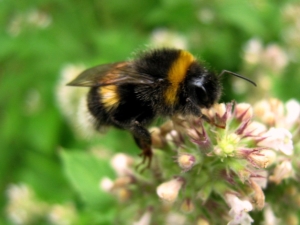
Few people know that bumblebees also collect nectar, they make very small stocks, honey is needed only to feed the larvae. At the same time bumblebee honey has many useful qualities.The price for such honey is high, because it is found in nature, it is not as often as bee. Some beekeepers specialize in bumblebee honey, their products can be found on the Internet.
The benefits of bumblebees
These insects are useful for the development of gardening. Consider what is their use:
- promote effective pollination of almost all plant species;
- peculiarities of the anatomical structure of the bumblebee in that the long proboscis of the insect makes it possible to reach the most remote corners in plants
- bumblebee's back legs are arranged in such a way that they provide the ability to carry pollen.
These creatures are very hardy, not afraid of temperature changes; able to live even in cold latitudes, and "work" even at temperatures close to frost. It is impossible to say the same about any other insect; they produce bactericidal enzymes that destroy pathogens, which contributes to the additional protection of plants. On average, these creatures process five times larger areas than the average bee can do.
Bumblebees are more savvy and have excellent vision, they perfectly find their way out of the room with an open window, which can't be said about bees. These creatures are quite good-natured, they rarely bite; if you stir the hive, they will certainly become aggressive. Bumblebees are not collectivists, they do not attack the enemy with clouds, like bees. The bumblebee's sting does not have chipping, so it does not remain in the body.
Useful properties of the product
Honey created by bumblebees is a unique product which has its own characteristics:
- it looks like liquid jam;
- has a low density;
- has a diverse collection of pollen.
This honey is more saturated with all sorts of minerals and amino acids (more than two times). In large quantities there are such substances:
- carbohydrates;
- squirrels;
- metals.
It is recommended to store the product at a temperature of from 0 to +3 degrees, if it is higher, the honey will begin to oxidize.
Number of kilocalories in bumblebee honey:
- 1 teaspoon (12 g) - 38.7 kcal;
- 1 tablespoon (30 g) - 96.3 kcal;
- 100 g - 324 kcal;
- a cup (360 g) - 1166 kcal;
- a cup (380 g) - 1231 kcal.
Honey is very useful, effectively helps to cure various ailments:
- asthma and bronchitis;
- diseases of the digestive system;
- liver disease;
- diseases of the genitourinary system.
This product may cause allergies, so this fact should be taken into account.
If the blood sugar level is above average, then it is better not to use this product. In general, bumblebee honey is a nutritious product with a mass of beneficial properties.
How to live in nature?
Bumblebees live one season in the warm season.
Bumblebee cells can be located in the hollow or under the roof of an old shed. The main condition: the place must be isolated, for the normal development of the bumblebees a stable temperature is required.
After choosing a place, the uterus begins to deal with procreation issues. She lays eggs in containers, fills them with pollen and nectar. This process lasts non-stop: the pupae mature, then a bumblebee forms from the pupa, during which time the uterus continues to lay eggs.
Honeycombs have an unconventional form (similar to closed jars and more capacious). In order for bumblebees to take root, beekeepers make special dwellings, which significantly increases the yield of plants.
Artificial breeding
The main difference between bees and bumblebees is that they are collectors of pollen and nectar, for which bumblebees have special notches on their hind legs. Bumblebees are tireless and extremely productive. One bumblebee per day can "spud" more than one thousand plants. Bumblebees "work" even in inclement weather. The cooling system and thermoregulation of the Bumblebee is unique, its body always keeps the temperature at + 40 degrees.
A kilogram of bumblebee honey costs more than five thousand rubles. Buying such honey, it is recommended to pay attention to quality certificates, as there are many fakes on the market.
It happens that farmers put bumblebees even in greenhouses. These creatures are able to perfectly navigate at any time of the day, they will always find a way out of the room where there is a half-open window leaf. Better pollinator of plants than the bumblebee, it is difficult to think.
Bumblebees can be bred artificially, for this purpose, special hives are built, in which the lid is removed. Make such bumblebee "apartment" is easy. The thickness of the board is two centimeters.
Nucleus:
- width 14.2 cm;
- length 20 cm;
- height is 15,1 cm.
Inside a bumblebee object to have a volume of 15.5 cm, the entrance is made with a diameter of 1.6 cm.
The hut is specially covered with a black color scheme so that the bumblebee individuals of the female fly. The floor is covered with a layer of sawdust of about 3 cm. On top of the sawdust is placed the old nests of mice that are harvested in the fields. In such nests there are no parasites, and they are warm.
Wax moth often annoys insects. After the bumblebees settled the hive, a couple of antimoli tablets are placed on the lid.
To protect the bumblebee nests from the moth, put the bumblebee, which is shaped like a tube. The device design is simple and effective. To protect bumblebees from ants and vole mice, pegs are driven into the ground (height 50 cm), on which a sheet of plywood is placed, it is covered with PVC film, it must be pushed beyond the limits by eight centimeters, beehives are fixed with tape or twine.
In late summer, females burrow into the ground, hibernate. With the onset of frosts, they are collected and put in a refrigerator where the temperature is not lower than zero. In spring, anabiosis in females ends, they are released into the wild to fly around the hives. Such operations can successfully populate the “rooms” prepared for bumblebees. Bumblebees pollinate different cultures well, several times more efficiently than bees.
Bumblebees are polytrans, which are universal in terms of pollination. Bumblebees are very beautiful creatures and extremely good-natured, unlike bees. The Red Book contains more than 15 types of these unique creatures.
For more information about bumblebees, as well as their home breeding, see the video below.

